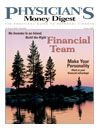Protect Your Possessions During a Disaster
As Hurricane Katrina causeddeath and destruction whenit ripped through the GulfCoast, it served as yet another grimreminder that there are few safehavens in America. Each year, tragicevents take lives and indiscriminatelyrob victims of irreplaceable familytreasures. Although insurance companiesand state and federal agenciesstand ready to help survivors rebuildtheir homes and replace certain materialpossessions, sadly, these institutionscan't replace one-of-a-kind keepsakes.Many of those who are fortunate tosurvive a natural disaster but lose theirhomes and personal possessions oftenface the reality of tragedy absent of thepersonal belongings that bring comfortand rekindle spirits.
Several years ago, when a wildfiresuddenly threatened our home insouthern California, we were forced toevacuate with no time to gather andtake with us a lifetime's accumulationof treasures. Although thankful thatwe had escaped safely, I agonized overhow we would get through losing ourhome if we also lost the stuff the insurancecompany could never replace.
Some of the treasured keepsakes Iknew I'd miss most were an endearingfive-page letter my mother had writtento me before she passed away; mymom's recipes; a poem with imprintsof my infant daughter's hands and feetwritten by my wife; my grandson's firstwork of art; a stack of letters my dadsent to my mom from overseas duringWWII; hundreds of one-of-a-kind photos;and important papers and files.
Fortunately, our home was spared.However, realizing that we might notbe so fortunate in the event of anothernatural disaster, fire, robbery, oract of terrorism, we put into action aplan that would help disaster-proofmany of our valuables.
The following are a few useful tipsthat can help protect irreplaceablebelongings, important papers, andalso preserve a family's wealth of personalwisdom and know-how:
•Purchase a small fireproof andwatertight safe, several portable cardboardor plastic file boxes, a three-ringbinder, a set of tab dividers, andsome three-hole paper.
•Open a safe deposit box at yourlocal bank. Be sure the box is largeenough to accommodate your valuablesand can be accessed by you oranother trusted person. Maintain acurrent inventory of the contents.
•Obtain copies of photographs,documents, important papers, wills,trusts, health care directives, powers ofattorney, passports, birth and marriagecertificates, military discharge papers,naturalization papers, loan documents,appraisals, certificates of authenticity,deeds, credit cards (front and back),insurance policies, warrantys' formation,letters, kids' artwork, etc. Thismay take a little time, but it's worth theeffort. Store documents and informationcontaining confidential and sensitivedata, spare keys, irreplaceableitems, valuable jewelry, coin and stampcollections, etc, in your safe depositbox or home safe. Store originals orcopies of photos, negatives, and otherpaperwork at another location, such asyour office or a friend's home.
•Maintain a current list of passwords,access codes, PINs, the combinationto your home safe (or the locationof the spare key), and other confidentialdata. Store this and other confidentialinformation at a secure butreadily accessible location.
•Items that cannot be photocopiedor must be kept at your home shouldbe stored in portable file boxes. Markthe tops and sides of the portable fileboxes "take" and store the boxeswhere they can be taken with you inthe event you are forced to evacuate.Keep an empty file box ready for thecontents of your home safe. If you areplanning to go away, consider storingthese items with someone who canremove and protect them should a disasteroccur while you are gone.
•During an evacuation, time mightnot allow for the removal of photographson display, diplomas, plaques,etc. In order to preserve the memory ofthese items, consider taking regular ordigital photos. Store the photos, negatives,or CD in your safe deposit boxor off-premises location.
•Computer data should be backedup frequently and stored with youroriginal program off the premises.
•Create a written or video inventoryof all of your possessions. Don'tforget to include items stored in yourgarage, basement, and attic. Whereapplicable, include serial numbers,dates of purchase, and purchase price.Since this information could be veryuseful in settling an insurance claim,be sure to keep it current. Store yourmost current copy of your inventoryin your safe deposit box.
•The three-ring binder is intendedfor you to create a central source ofpersonal information that can helpprovide direction and hope following adisaster or other family emergency. Itshould include instructions for whomto call first, what to do first, and whereto find things; personal family information;a family medical history thatincludes doctor contact information,current medications, allergies, etc; acurrent telephone and e-mail directorythat lists family members, friends, andtrusted advisors; a current inventory ofyour financial assets, including allaccount numbers; estate informationthat includes details about final wishesand arrangements; and a list of servicecontracts and warranties.
Martin Kuritz is a retired estate and financial
planner who has helped families economically
and emotionally prepare for the
inevitable for more than 30 years. He wrote
The Beneficiary Book: A Family Information
Organizer (Active Insights; 1992), an information publication
with fill-in-the-answer worksheets that offers a convenient
place to record, organize, and centralize final testimonies.
For more information, call 800-222-9125 or visit
www.active-insights.com.
